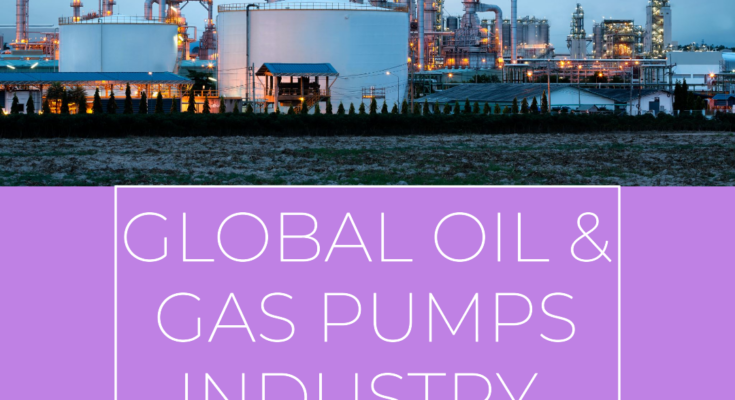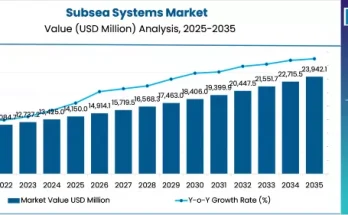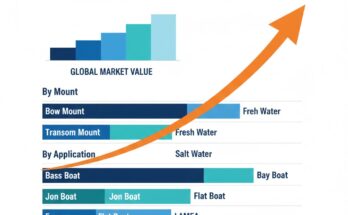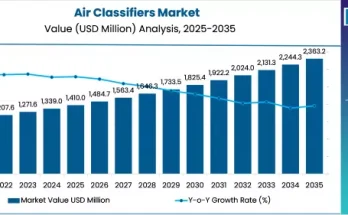While the world’s demand for energy keeps rising, the oil and gas sector continues to be the backbone of contemporary infrastructure. A vital element at the center of the industry is pumps. These machines play a crucial role in the safe, effective, and uninterrupted transmission of oil and gas through all exploration, production, and distribution stages. The oil and gas pumps market is undergoing vibrant changes fueled by technological innovation, sustainability requirements, and geo-political shifts.
Oil and Gas Pumps Market Overview
Oil and gas pumps are mechanical systems intended to convey fluids—whether crude oil, refinery products, or natural gas—via pipelines and production systems. The pumps are applied throughout upstream, midstream, as well as downstream operations, making them essential for the operation of extraction rigs, processing plants, storage facilities, and transportation systems.
As the energy market is becoming more concerned about operational efficiency and environmental regulation, new pump technologies are being designed to provide better performance at reduced energy levels and lower maintenance needs. In addition, as businesses embrace digitalization, integrating smart monitoring and predictive maintenance features is becoming the norm for pump systems.
Regional Insights of Oil and Gas Pumps
North America
North America is still an important force in the oil and gas pumps market due to its established exploration and production facilities. The focus on shale gas production and offshore operations in the region also fueled the use of sophisticated pumping technologies.
In addition, adherence to emission control regulations is encouraging energy companies to invest in pump systems that help conserve energy.
Europe
Europe’s petroleum industry, while more advanced and increasingly concentrating on transition fuels, remains dependent on high-performance pumps. The stringent environmental laws of the region and the move towards sustainable production practices are fueling the transition to technologically driven and environmentally friendly pump systems.
Asia-Pacific
The Asia-Pacific region is becoming a significant growth center for the oil and gas pumps market. Industrialization, increasing energy requirements, and state investments in the development of oil and gas facilities are fueling the market. China and India are investing significantly in upstream and downstream capacity builds, thus generating enormous demand for pumping technologies.
Middle East & Africa
With vast oil reserves and enormous production capacities, the Middle East remains a key player in global oil supply. Investment in updating infrastructure and increasing extraction efficiencies is backing up the pumps market growth. In Africa, reserves yet to be tapped and growing exploration are providing fresh opportunities for pump vendors and manufacturers.
Oil and Gas Pumps Market Key Trends & Forecast
Shift Toward Electrification and Energy Efficiency
Energy consumption is a big issue for oil and gas operators. Consequently, there is also a significant trend towards using electrically driven pumps, which are more efficient and cheaper to run compared to conventional mechanical systems. The transition towards electrification is also in line with world sustainability and carbon-neutralization targets.
Adoption of Smart Pump Technologies
The infusion of IoT, AI, and cloud computing into pumping systems is revolutionizing maintenance and performance optimization. Sensors on intelligent pumps facilitate real-time monitoring, fault detection, and predictive maintenance, leading to decreased downtime and longer equipment life.
Focus on Environmental Compliance
Pumps with emission control, leak detection, and spill prevention are increasingly popular. Environmental regulations are becoming more stringent globally, prompting operators to select equipment with minimal environmental footprint and strict compliance requirements.
Increased Emphasis on Offshore and Subsea Pumping Solutions
As reserves decrease in onshore areas, more focus is being put on offshore exploration. This increased need for subsea and deep-water pump systems that are resistant to high pressure, corrosion, and temperature has created a high demand.
Improved Material and Design Innovations
Pump makers are investing in research that will provide more resistant materials with improved corrosion resistance, wear resistance, and high-temperature resistance. Advanced designs with better hydraulic performance and less vibration are also being implemented to maximize service intervals and enhance safety.
Oil and Gas Pumps Market Applications & End-Use Outlook
Upstream Operations
In the upstream, pumps are employed for crude oil extraction, artificial lift systems, and drilling mud circulation. The increasing demand for recovery improvement rates from mature oil fields is driving demand for high-pressure and multiphase pumps.
Midstream Operations
Midstream applications are the transportation of oil and gas from production sites to export terminals or refineries. Boosters, pipeline pumps, and loading/unloading systems are vital in this sector. Increased pipeline and LNG terminal infrastructure expansion is fueling market growth.
Downstream Operations
Downstream processes, such as petrochemical processing and refining, employ a range of pumps to deal with chemicals, hydrocarbons, and by-products. The market for high-volume and corrosion-resistant pumps is high in this sector because the processes are complex in nature.
Key Industries
Apart from the immediate oil and gas producers, industries like engineering, procurement, and construction (EPC) companies, as well as maintenance services providers, are significant players in the pumps industry. They are increasingly seeking turnkey pump solutions with good reliability, remote diagnostics, and seamless integration into automation systems.
Competitive Landscape
The market for oil and gas pumps is marked by the presence of global majors as well as niche regional players. Some of the major strategies are technological innovation, partnerships, and regional expansion. Companies are spending on R&D to provide future-proof pumping systems with digital integration and less environmental footprint.
Furthermore, mergers and acquisitions are transforming the industry’s competitive landscape. Companies are using synergies to increase their product offerings, streamline supply chains, and increase their presence in high-growth markets.
Oil and Gas Pumps Market Challenges and Opportunities
Challenges
- High Operational Costs: Pumping and energy use are among the major cost centers for pump operators.
- Fluctuating Oil Prices: Capital spending and project timings could be affected by market fluctuations.
- Regulations: Meeting environmental and safety standards can prove to be expensive and time-consuming.
Opportunities
Digital Transformation: Smart technology adoption offers substantial possibilities for value creation and optimization.
Sustainable Operations: Energy-efficient and environmentally friendly pumps are in demand throughout the value chain.
Emerging Markets: Developing industrial economies provide productive soil for expansion and innovation in the market.
Conclusion
Pumps are the unsung heroes of the oil and gas industry, as they serve as the industry’s backbone to facilitate the safe, efficient, and sustainable transportation of resources. The continuous revolution in the energy sector, fueled by digital transformation, environmental responsibility, and changing demand patterns, is defining the direction of the oil and gas pumps market.
Companies that align their strategies with future trends and invest in innovative pump technologies are likely to attain long-term operational excellence and robustness. Access to in-depth market information and ability to comprehend the changing needs of end-users will be essential in navigating this intricate yet opportunity-filled market.



